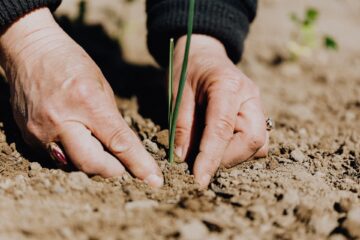![]()
Introduction:
Several indigenous and local communities across the world possess unique knowledge which is acquired by them through experience over the centuries. This knowledge is then transferred to other generations. Such culturally transmitted knowledge is called Traditional Knowledge (hereinafter “TK”). With the increasing globalisation, the need to protect and preserve this knowledge has also arisen. This is mainly due to the increased commercial use of TK in agriculture, the pharmaceutical industry and creative industries. There have been many instances in which third parties have misappropriated TK and in some cases to the disadvantage of the communities from whom the knowledge originates[i]. Many local and indigenous communities and governments, mainly in developing Nations, have demanded equivalent protection for TK systems. Numerous efforts have been made to come up with legal instruments at the national, regional and international level in order to protect it. Protection of TK is not sufficient at the national and regional level due to globalisation. Hence, several international organizations have come forward to protect TK through the establishment of international forums. The first effort was the adaptation of the Convention on Biological Diversity, 1992 (hereinafter referred to as “CBD”); after which, protection of TK has been on the agenda of many inter-governmental organizations.
Meaning of Traditional Knowledge
The term TK hasn’t been given a single definition due to its diverse nature and defining it would be prejudicial to various forms of knowledge that are held by traditional communities[ii]. In general terms, TK means the knowledge, know-how, skills, innovations or practices; that are passed down traditionally from one generation to another and which form a part of the traditional conduct of indigenous people and local communities who appear as their guardians or custodians. TK can be agricultural, environmental or medicinal knowledge, or knowledge related with genetic resources; such as knowledge about traditional medicines, traditional hunting of fishing techniques, and knowledge about animal migration patterns or water management[iii]. In other words, TK is produced, preserved and passed on in a traditional context; fundamental to and associated with an indigenous or local community, which is recognized as holding knowledge through a form of custodianship, guardianship, collective ownership or cultural responsibility[iv].
Indian Initiative in Protection of Traditional Knowledge
India is rich in TK due to its diverse culture. Its legal system for TK related issues is more developed than many other countries. TK of medicine and agriculture plays a critical role in India. Thus, the number of stakeholders in India who are likely to be affected by the efforts to protect it or the lack of it are huge[v]. Indian systems of medicine, which are referred to by the Indian healthcare systems, are derived from ancient texts such as Ayurveda, Sidha and Unani medicines. Similarly, Folk tradition also exists in India, which has been transmitted orally for many centuries. These folk traditions are rich and diverse and include specialized practitioners as well as home remedies for common ailments. Traditional Knowledge of Digital Library (TKDL) is a collection of data comprising of 34 million pages of formatted information on over 2260000 medicinal formulations in multiple languages. It is used as a tool by examiners of major Intellectual property offices. It is a powerful weapon in the country’s fight against erroneous patents[vi]. The knowledge about the health benefits of neem and turmeric is an example of folk tradition. Yoga is another popular example. The TK of agro-biodiversity is also prevalent in India. This is because a large portion of its population relies upon the income generated through agricultural activities. The methods used by the farming communities over the years also come under the ambit of TK.
PATENT ON TURMERIC: Two researches based in US- Suman K Das and Hari Har P Cohly, applied for a US patent on the healing properties of turmeric. The patent application had also acknowledged the fact that turmeric has been used in India as a medicine for a long time. The patent was granted in 1995. However, the Council of Scientific and Industrial Research (CSIR) in India objected and challenged the patent in order to get it revoked on the basis that the purported invention has been a part of public domain knowledge in India. The patent, after being re-examined, was revoked on 28 March 1999. This case is important because it demonstrated the importance and need for documentation of TK available in the public domain so that patent offices across the world can check claimed inventions against existing sources of information[vii].
Initiatives-
- The Patents Act, 1970- Section 3 of the Patents Act states what is not invention under the meaning of this act and subsection (p) states that- “an invention which in effect, is traditional knowledge or which is an aggregation or duplication of known properties of traditionally known component or components”[viii].
- Plant Varieties Protection and Farmer’s Rights Act, 2001 (PPVFR Act)- The PPVR Act, 2001, is a unique law and first of its kind which simultaneously recognizes and rewards the contribution of breeders and farmers to the advancement of new crop varieties, was enacted in the backdrop of these various international and national events[ix].
- National Bio-Diversity Authority- This act is a strategy to safeguard the biodiversity and economic interests of indigenous communities.
- Biological Diversity Act, 2002- The provisions of this act give access to biological resources of India with the objective of securing equitable benefit sharing originating from the commercial use of those resources. It also gives recognition to the knowledge of local communities, highlighting the need to protect them.[x]
International Forums and Their Role in Protecting Traditional Knowledge
Many international organizations such as WIPO, UNEP/CBD, UNCTAD; have taken initiatives over the past several years to protect TK of communities all across the world. These initiatives have been taken after the adaptation of CBD in 1992. These forums include:
- Convention on Biological Diversity
CBD was the result of discussions held in Rio de Janerio on United Nations Conference on Earth and Development (Earth summit), 1992. Article 8 (j) of the convention states that “each contracting party shall as far as possible and as appropriate, subject to its national legislation respect, preserve and maintain knowledge, innovations and practices of indigenous and local communities embodying traditional lifestyles relevant for the conservation and sustainable use of biodiversity and promote the wider application with the approval and involvement of the holders of such knowledge, innovations and practices and encourage the equitable sharing of benefits arising from the utilization of such knowledge, innovations and practices”[xi]. The preamble also recognizes the dependence of many indigenous communities on biological resources and gives emphasis to the desirability of benefit sharing. Apart from this, Articles 10 (c) and 28 (4) also lay down the rights of indigenous people. The provisions laid down in the CBD with respect to the recognition of TK is vague and doesn’t guarantee any rights to the indigenous people but it plays an important role as an international instrument to give official recognition to the rights of the indigenous communities.
- Trade Related aspects of Intellectual Property Rights (TRIPS)
TRIPS agreement by itself doesn’t provide any direct provisions wrt the protection of TK but gives some sort of protection indirectly. Article 1 of the TRIPS Agreement states that- “members may but shall not be obliged to implement in their domestic laws more extensive protection than that is required by the agreement, provided that such protection does not contravene the provisions of this agreement[xii]” It has been argued that this provision can be used for the protection of TK. Article 27 of the agreement states that “Members may exclude from patentability inventions, the prevention within their territory of the commercial exploitation of which is necessary to protect order public or morality, including to protect human, animal or plant life or health or to avoid serious prejudice to the environment, provided that such exclusion is not made merely because the exploitation is prohibited by their law”[xiii]. It has been debated that this provision can be applied for the protection of biological diversity associated with indigenous communities.
- The International Convention for Protection of New Varieties of Plants (UPOV)
Although the UPOV convention exclusively deals with the protection of new plant varieties and is silent wrt TK, it doesn’t forbid granting or creation of rights related to it. There are some provisions which can be applied to the protection of TK and the rights of indigenous communities. Article 7 of the 1991 Act of the UPOV provides that “the variety shall be deemed to be distinct if it is clearly distinguishable from any other variety whose existence is a matter of common knowledge at the time of filing of the application”[xiv]. This implies that legal protection can be provided only in those cases where it can be shown that the variety is distinct from others including traditional varieties.
- UN Declaration on Rights of Indigenous People (UNDRIP)
This Declaration made by the General Assembly, though not legally binding, is a step towards the protection of rights of indigenous persons. It acknowledged the urgent requirement to respect and promote the inherent interests and rights of indigenous communities which they derived from their social structures[xv]. Art 24 talks about the rights of the indigenous people over their traditional medicines. This article also provides for the conservation of their important medicinal plants, animals and minerals[xvi]. Art 31 is an important attempt to protect TK[xvii]. It demands the States to take all adequate measure to recognize and safeguard the cultural heritage, traditional knowledge, traditional cultural expression as well as the manifestations of their sciences, technology and cultures[xviii].
- WIPO- The Intergovernmental Committee on Intellectual Property Genetic Resources and Traditional Knowledge
The Intergovernmental Committee (IGC) established in the year 2000 is an important forum for analyzing Intellectual Property issues with respect to benefit-sharing, TK and protection of folklore; and discussion of ideas for the provision of legal mechanisms, creation of practical tools etc for the protection of TK. IGC has given practical solutions including a toolkit for the administration of Intellectual Property in the context of registering TK and genetic resources, a pragmatic guide for the conservation of cultural expressions, suggestion for modification of international patent classification to include categories of TK[xix] etc. This committee has made significant development and progress in addressing the practical linkages between the current IP system and the custodians of TK.
- Nagoya Protocol on Access to Genetic Resources and the Fair and Equitable Share of Benefits Arising from their Utilization
The Nagoya Protocol was drafted in October 2010 after many years of debate. The parties to the CBD met in Nagoya, Japan and concluded the draft protocol which states the conditions for granting access to genetic resources, their utilization and fair and equitable sharing of benefits from such utilization. Though its primary objective is regarding the protection of genetic resources, it has many provisions which can be useful for the protection of TK. Article 5 of the protocol states that “Each Party shall take legislative, administrative or policy measures, as appropriate, in order that the benefits arising from the utilization of traditional knowledge associated with genetic resources are shared in a fair and equitable way with indigenous and local communities holding such knowledge. Such sharing shall be upon mutually agreed terms[xx]” The protocol emphasizes on the need for the development of a global multilateral benefit-sharing mechanism providing for fair and equitable benefit sharing associated with TK related genetic resources which occur in trans boundary situations where is not possible to take prior consent of the community. Protocol asks it parties to ensure that their national legislations provide for support and development of those indigenous communities[xxi].
Conclusion
Since TK is a very complex and broad term, many international organizations are trying to decipher the methods and ways of protecting it. Several initiatives have been taken on the national, international and regional level, but the laws protecting TK are still evolving.
References:
[i] Marisella Ouma, “Why and how to protect Traditional Knowledge at the international leve”l, SEMINAR ON INTELLECTUAL PROPERTY AND TRADITIONAL KNOWLEDGE, (Nov. 25, 2016) https://www.wipo.int/edocs/mdocs/tk/en/wipo_iptk_ge_2_16/wipo_iptk_ge_2_16_presentation_11ouma.pdf
[ii] Juhi Chowdhary, Intellectual property and traditional knowledge, LEGAL SERVICE INDIA, available at: http://www.legalserviceindia.com/article/l98-Intellectual-Property-and-Traditional-knowledge.html#:~:text=They%20are%3A,traditional%20knowledge%20must%20provide%20for%3A&text=Promotion%20of%20equitable%20benefit%20sharing%20from%20use%20of%20traditional%20knowledge. (Last visited on Aug 12, 2020)
[iii] World Intellectual Property organisation, available at: https://www.wipo.int/tk/en/tk_quiz_2020.html
[iv] Ibid.
[v] Shodhganga, chp.3-Protection of Traditional Knowledge in India, https://shodhganga.inflibnet.ac.in/bitstream/10603/14508/9/09_chapter%203.pdf (Last visited on Aug 12, 2020)
[vi] Dr. V.K. Gupta, Protecting India’s Traditional Knowledge, WIPO MAGAZINE, (June 2011)
[vii] Ibid.
[viii] The Indian Patents Act, 1970, s.3
[ix] Supra note v
[x] Nithin V. Kumar, “Protection of Traditional Knowledge: National and International Initiatives and possible ways ahead”, SSRN, Feb 28, 2012.
[xi] The Convention on Biological Diversity, 1992, a.8(j).
[xii] Trade Related Intellectual Property Rights, a.1
[xiii] Supra, a. 27
[xiv] The International Convention for Protection of New Varieties of Plants (upov), 1991 Act, a.7
[xv] Supra note x
[xvi] United Nations Declaration on Rights of Indigenous People, a.24
[xvii] Ibid, a.31
[xviii] Ibid.
[xix] Supra note x.
[xx] Text of the Nagoya Protocol, a.5
[xxi] Supra note x.



0 Comments